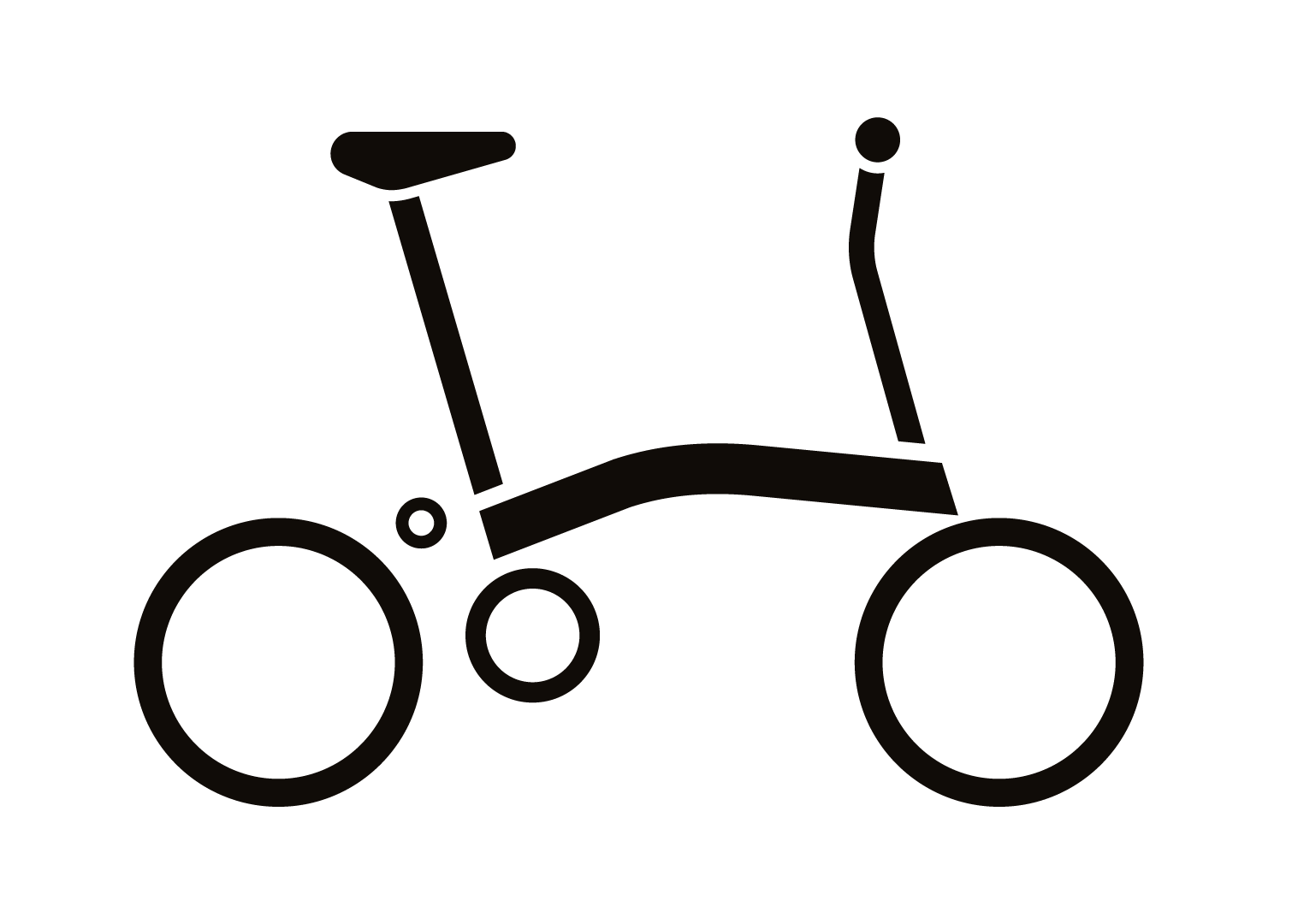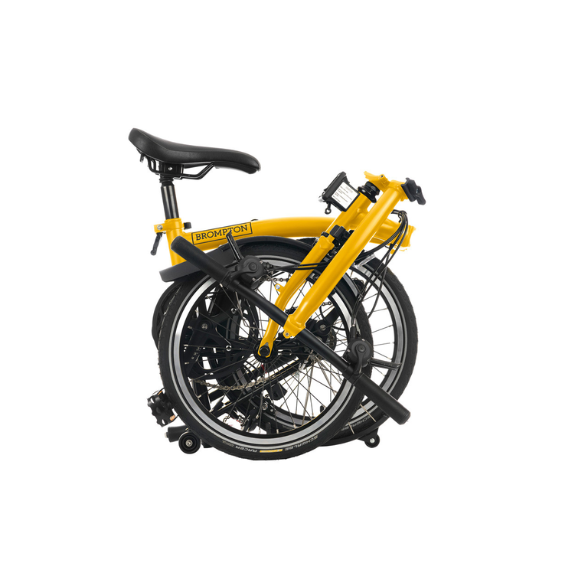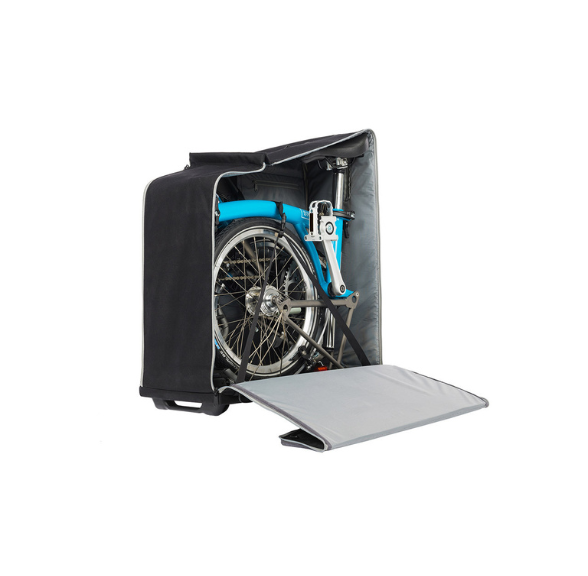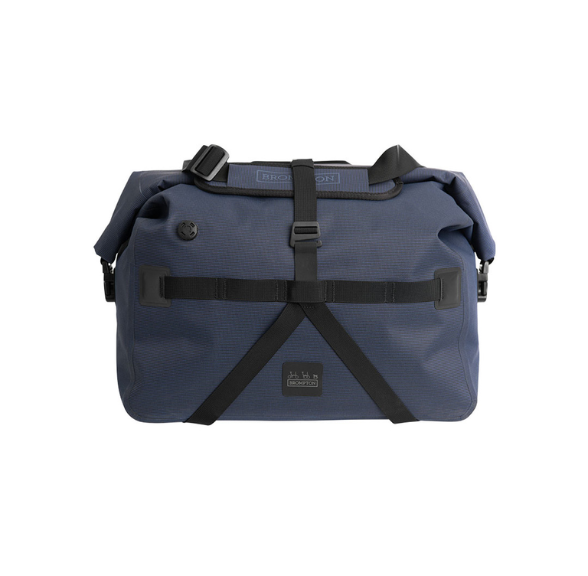Please select

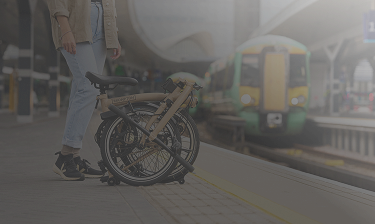
How to travel with a bike on a train
How to travel with a bike on a train
One of the biggest benefits of a Brompton bike is its ability to go wherever you go, including on trains.
One of the biggest benefits of a Brompton bike is its ability to go wherever you go, including on trains.
Travelling by train is a wonderful way to get around. Whether that’s the daily commute, or setting off on holiday. At Brompton, we’re big fans of train travel – particularly when it’s combined with riding a bicycle.
The rail network in Great Britain covers most of the country. You can get within 10 miles of Lands End and 16 miles of John O’Groats by train, so it really does span the length of this fair isle.
With a Brompton folding bike by your side, you can join up the bits that aren’t directly served by a station – and the whole country becomes your oyster.
If you want to go further, the Eurostar from London can take you to Paris, Brussels and Lille, with onward rail services from there going all over Europe. And even beyond.
Which UK trains can you take bikes on?
There are a lot of train companies operating in Great Britain. A fairly staggering 29, in fact, according to the National Rail Enquiries website. The good news is that all of them allow bikes.
There are, of course, some limitations to this. But mostly these are based on available space, and time of day. There are a few specific routes or services that don’t allow bicycles.
Our biggest bit of advice is to check the bike policy of your chosen train operator before you travel.
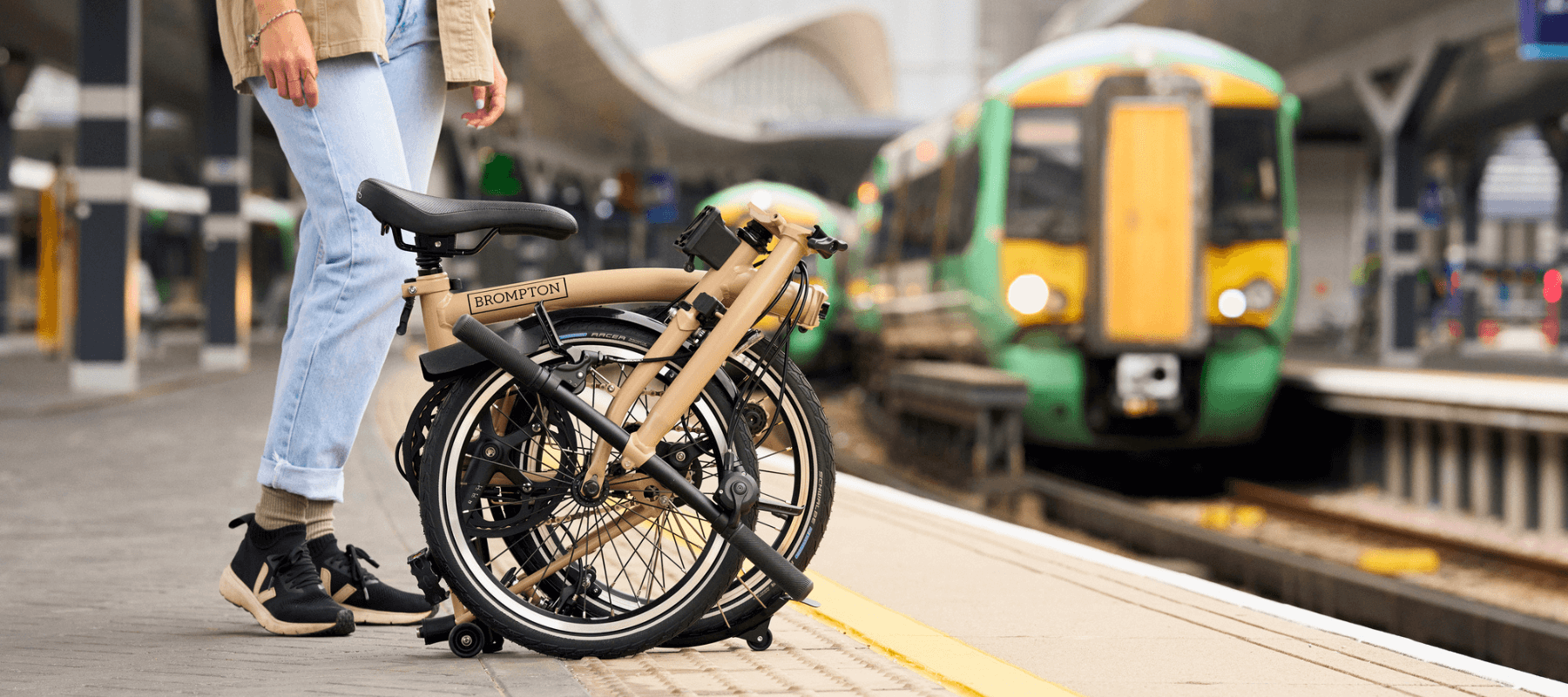

Are there rules for taking bikes on trains?
There are some rules about when and how you can take your bike on a train. In some cases you might need to book ahead, or slightly adjust your schedule to avoid peak times.
Time of day
Some train companies limit the time of day that customers can bring bikes onto their trains.
This is more common among the companies operating commuter services into major cities, where rush hour sees carriages get extremely busy.
Rush hour, also referred to as peak time, is typically defined as between 07:00am and 09:30am, and 16:30 and 19:00.
It’s always worth checking the train company’s policy, though, because if you have a Brompton folding bike some or all of the restrictions may not apply.
Cycle reservations
Larger trains travelling longer distances tend to require a reservation for your bike. This is to limit the number of cycles on each service, so that the carriages don’t become snarled up with countless bikes all over the place.
Note. If you own a folding bike, you do not need a reservation of any kind. Just store your fully folded bike in a luggage rack out of the way of other passengers.
How you actually make a cycle reservation varies from one company to the next.
It can usually be done online or through the train company’s own app; or you can request a bike reservation through a third-party booking app when you purchase a ticket; or you can make a cycle reservation in person at a ticket office.
It’s worth noting that a ticket office can make you a cycle reservation, even if you’re not buying the ticket from that office at that time. If you change your plans and need to add a bike to a ticket you already bought online, the ticket office can add the reservation for your cycle (provided there is space on your chosen train).
Bike spaces
On intercity services there’s usually just one or sometimes two specific places for bikes to be stored on each train. This, again, varies from one company to the next – dependent on the particular make and model of the carriages they use.
If you’re making the journey for the first time, it’s worth getting onto the platform early and asking station staff where the bike spaces are located on the train.
Smaller local trains typically operate a ‘first come, first served’ system. There will be spaces somewhere along the train that are allocated for bicycle storage – and these days the carriages are often marked externally, so you can easily spot them as the train is pulling into your station.
Rules for folding bikes on trains
Normally, the rules on folding bikes are less restrictive. A handful of companies do specify extra things to do when travelling with a folding bike.
Companies c2c and Stansted Express say that folding bikes should be transported in a protective carrying case.
East Midlands Railway, South Western Railway and LNER all state that folding bikes go free of charge, as long as they can be stowed as luggage.
On the London Overground there’s a limit of one folding bike per vestibule area at peak times.
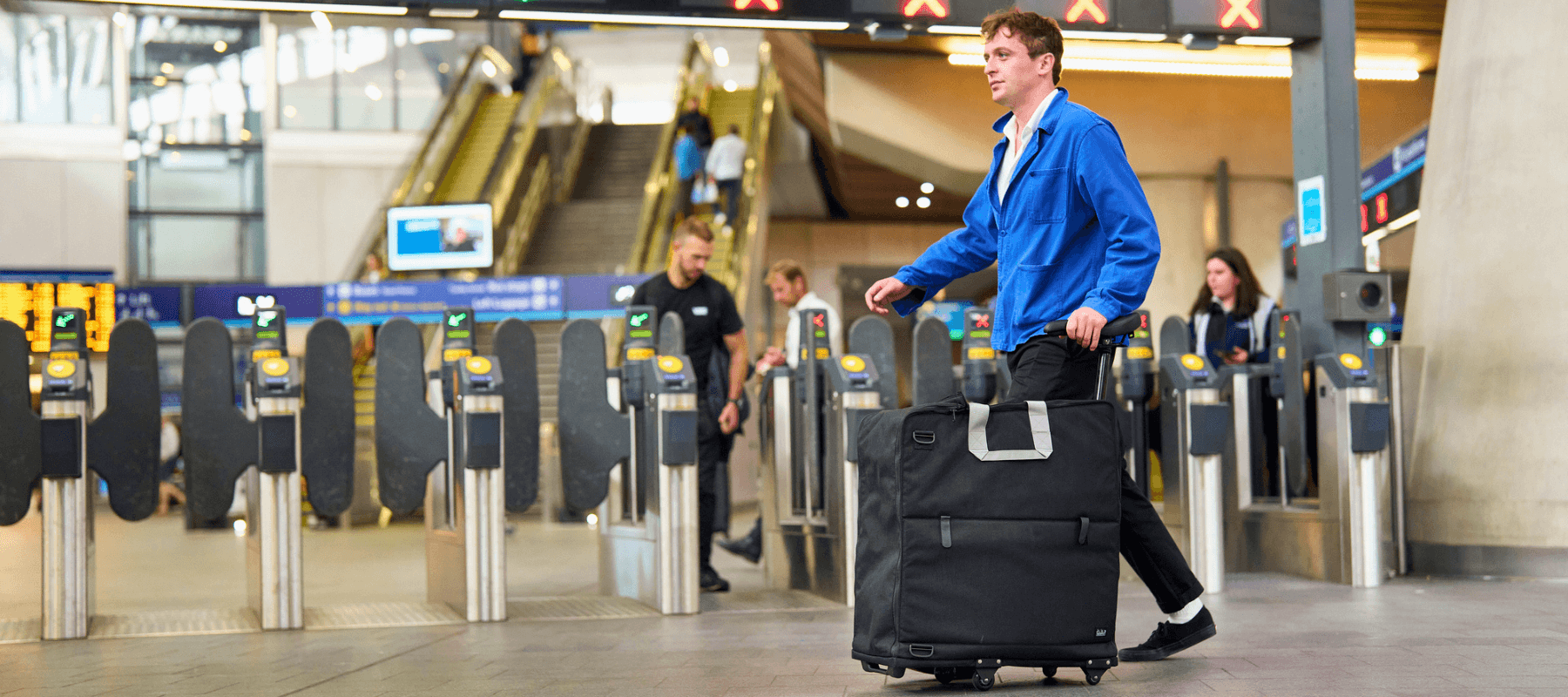
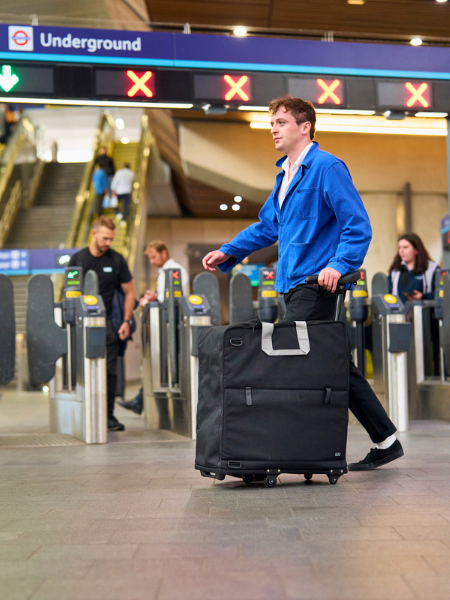
Are bikes allowed on London trains?
In London, conventional bikes are subject to the restrictions we mentioned above, and as of April 2025, all non-folding electric bikes are not allowed.
But we’ve got great news if you’re a Brompton-owning Londoner.
Transport For London (TFL), who are in charge of the tube and London buses, as well as the Elizabeth Line and Overground train lines, say this on their website:
“You can take folded cycles anywhere, at any time on all our transport services.”
So Bromptons are OK on TFL trains, even during rush hour. It’s also good to know that all Bromptons, including the G Line with its larger wheels, conform to TFL’s rule on wheel sizes.
Can I take my bike on the Eurostar?
Taking a folding bike on the Eurostar is nice and easy. This high-speed international rail line is a fantastic way to get to European cities like Brussels, Paris and Amsterdam with your Brompton in-tow.
The company explains its policy on folding bikes as follows:
“You can still bring a folding bike, folding electric bike, or children's bike on board as long as it's no longer than 85 cm in length and it's carried in a protective bag that covers the whole bike.”
If you don’t yet own a protective bag for your Brompton, you can purchase one from our website.
If you want to bring a non-folding bike, things are trickier. Hold onto your hats, folks…
- If you want to go to Paris, your bike must be fully disassembled before you board.
- If you want to go to Brussels, it needn’t be disassembled, but you do need to book a space in advance.
- As of April 2025, you cannot take a non-folding bike to Amsterdam on the Eurostar.
If you’d like to go further afield than the destinations serviced by Eurostar, check out our guide on how to travel with your bike on a plane.
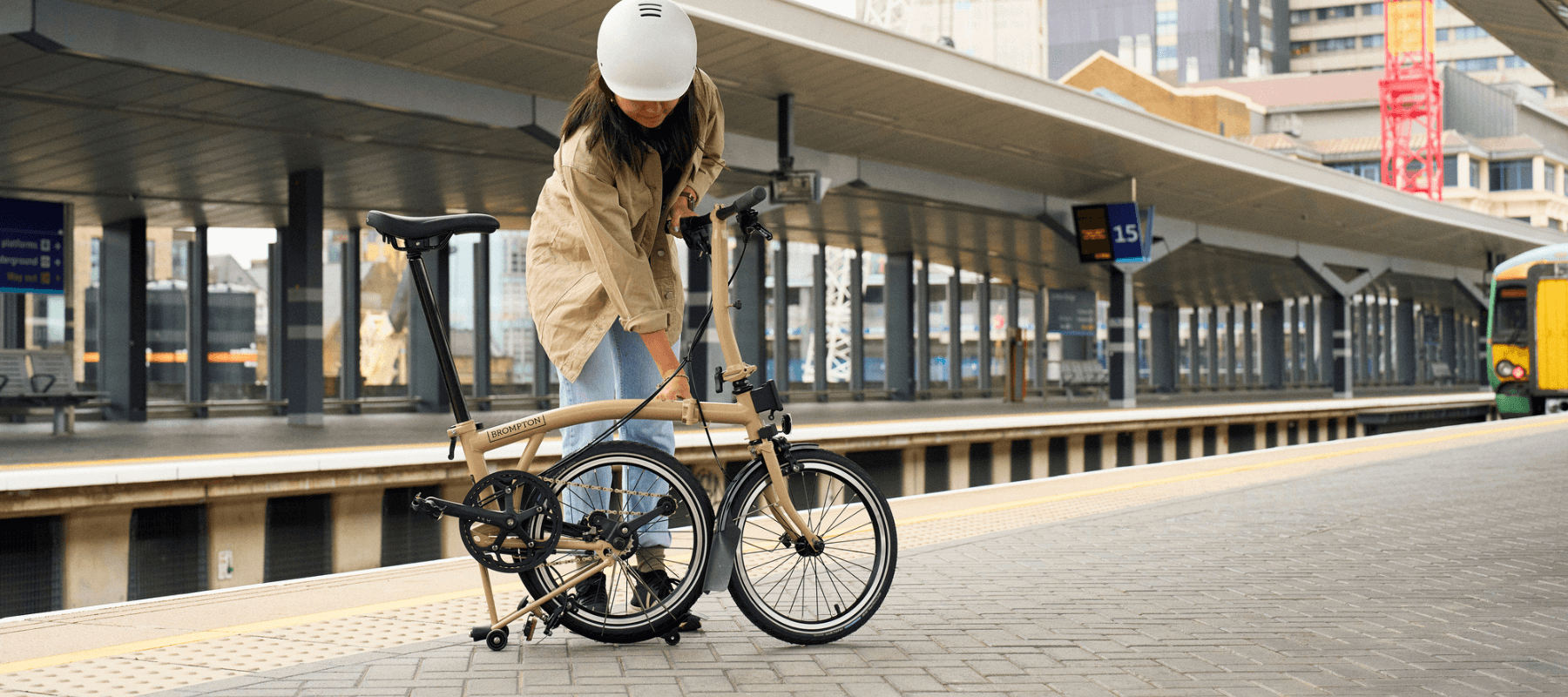
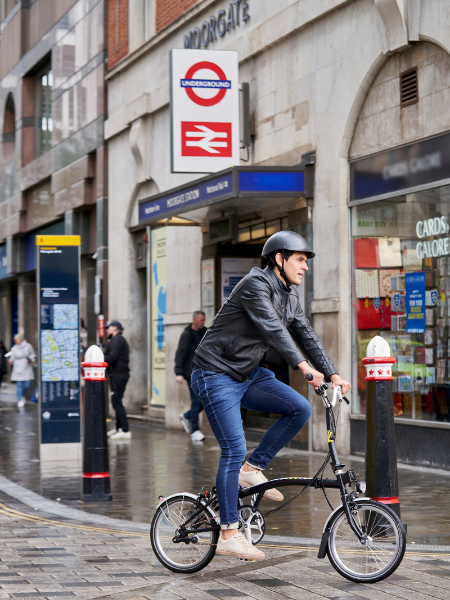
Ready for departure?
Whether you're commuting, exploring new cities, or embarking on a cross-country adventure, we think Bromptons and trains make the perfect pairing.
The UK's rail network and the international Eurostar offer seamless ways to integrate cycling into your travels. With a little planning and an understanding of train company policies, you can unlock stress-free, multi-modal transport.
If you’ve been inspired to head for the open road, take a look at our bikepacking guide, which gives you all the info you need to set off on an adventure.
Related products
Join our community
Stay up to date about launches, collaborations, events, offers and more. Sign up and learn more about all things Brompton. For more information, review our Privacy Policy.



